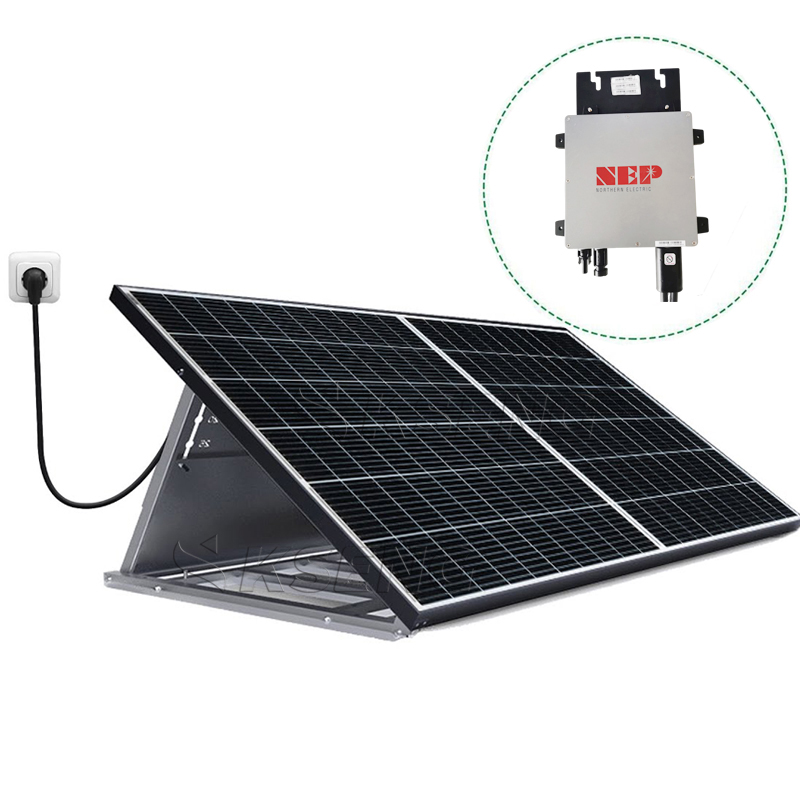As the world strives to become more sustainable and reduce its reliance on non-renewable energy sources, solar power has become an increasingly attractive option for many homeowners. Especially the ones living in apartments. Balcony solar power generation systems are a great way to reduce your carbon footprint and generate electricity right from your own home. With just a few components and some basic knowledge, you can easily set up a solar power system on your balcony that can provide you with clean energy and help you save money on your energy bills.

What Are Balcony Solar Power Systems?
Balcony solar power systems are a type of solar energy system that is designed to be installed on balconies or rooftops. These systems are typically composed of solar panels, an inverter or micro inverter, and sometimes also a battery pack. The solar panels convert sunlight into electricity and store it in the battery pack, which is then used to power your home. In other cases the excess power from your micro inverter can be fed back to the utility grid.
Generally, these systems – especially the ones installed with micro inverter – are easy to set up and maintain, and they provide a reliable source of energy with minimal environmental impact.
What are the Benefits of Balcony Solar Power Systems?
There are many benefits to installing a balcony solar power system in your home. For starters, they are a great way to reduce your carbon footprint, as they generate electricity without emitting. The other benefits of balcony solar power systems include reduced electricity bills, reduced environmental impact, and potentially even income from selling excess electricity back to the grid. In brief, especially the ones installed with micro inverter are:
-
Cost Savings: Installing a balcony solar power system can help to reduce your electricity bills significantly as you are using the sun’s free energy to generate your own electricity.
-
Eco-Friendly: Solar energy does not produce any carbon emissions or other pollutants, making it an environmentally friendly source of energy.
-
Easy Installation: Balcony solar systems can be easily installed and do not require any major renovations or changes to your existing home.
-
Durable: Solar panels are designed to be durable and can withstand harsh weather conditions.
-
Increase Home Value: Installing a balcony solar power system can help to increase the value of your home.
What are the main components of a balcony solar power system?
-
Solar Panels: The solar panels absorb energy from the sun and convert it into electricity.
-
Batteries: The batteries store the energy produced by the solar panels for later use.
-
Charge Controller: The charge controller regulates the flow of energy from the solar panels and ensures the batteries are fully charged.
-
Micro inverter / Inverter: The inverter converts the DC electricity produced by the solar panels into AC electricity which is usable for household appliances.
-
Mounting System: The mounting system keeps the solar panels in the correct position to maximize their exposure to sunlight.
How a balcony solar panel system can be installed?
-
Secure the mounting structure: Before installing a balcony solar panel system, you should secure the mounting structure to the balcony railing or wall. Make sure to use bolts and nuts to ensure stability.
-
Arrange the solar panels: Once the mounting structure is in place, arrange the solar panels in the desired configuration. Make sure to leave enough space between each panel to maximize sun exposure.
-
Connect the system: Connect the panels to the mounting structure using appropriate cables. Connect the system to an inverter, then connect the inverter to a battery or power source.
-
Install the wiring: Install the wiring between the panels, mounting structure, and inverter. Make sure to follow the wiring diagrams carefully to ensure safety.
-
Test the system: Once the system is installed, test it to make sure it is functioning properly. Make any necessary adjustments or repairs before turning the system on.
